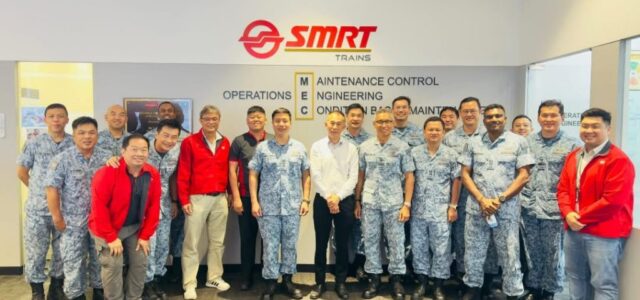SMRT, RSAF share insights on AI and predictive analytics in safety and maintenance
smrt-rsaf-share-insights-on-ai-and-predictive-analytics-in-safety-and-maintenance
#SMRT #RSAF #share #insights #predictive #analytics #safety #maintenance,
SINGAPORE: It’s not every day that fighter jet experts and train engineers sit down together, but this week, SMRT and the Republic of Singapore Air Force (RSAF) did just that by swapping notes on how artificial intelligence (AI) and predictive analytics can make both skies and railways safer.
The meeting took place at Kim Chuan Depot, home to the Circle Line’s Operations Control Centre. Colonel Nick Wong, head of Air Force Inspectorate, led the RSAF delegation, hosted by SMRT deputy group CEO Lee Ling Wee. The group was shown how SMRT keeps Singapore’s train system running, from high-tech control rooms to the Maintenance Engineering Centre (MEC), where staff monitor and repair critical rail components.
There was also a showcase by STRIDES Technologies, SMRT’s digital arm, which showed the RSAF how smart data can help predict when a fault is about to happen. Instead of waiting for something to break down, engineers can now fix these issues earlier through predictive analytics. This, in turn, may help save time and spare train commuters the frustration of sudden delays.
The RSAF also shared their own experiences with digitalisation to keep aircraft reliable, because while fighter jets and MRT trains serve very different purposes, both depend on precision, safety, and trust. Failure of these AI technologies may end up costing not just money but precious lives.
Read related: SMRT hosts Shanghai Shentong Metro delegation at Kim Chuan Depot to showcase rail innovation

Why this matters to you
For most of Singapore, the impact of these conversations shows up in small but meaningful ways, like whether your morning train runs smoothly or if you’re left stranded on the platform during rush hour. With this AI technology, SMRT will be more prepared to catch small problems before things get complicated, lines start to break down, and services get halted.
This could mean a lot of things: fewer service disruptions, faster recovery times, and less stress for the millions of commuters who count on the MRT every day. It also highlights something more important: Singapore’s openness to learning across industries so that it can better serve its people. By tapping into the RSAF’s expertise, SMRT is showing that the same high standards used to keep fighter jets flying can also help keep trains rolling, which may give commuters greater peace of mind.
Read related: Early Causeway gridlock sparks public outcry as queues for buses start at 4 a.m. due to increased demand
Shared mission, shared future
At its heart, this collaboration is about more than just machines — it’s also about people. From the engineers and servicemen working behind the scenes to the everyday commuters rushing to work or school, this project involves people — people helping people. Whether it’s in the skies or underground, the mission is the same: to keep Singapore moving safely and reliably.
If bringing together air force pilots and MRT engineers to trade ideas will benefit the people, then it’s a partnership that’s worth pursuing, especially for those who call Singapore their home

Read also: Citi and SMRT mark 20 years of partnership with refreshed Citi SMRT Card benefits for commuters
